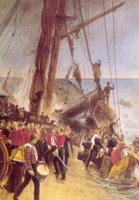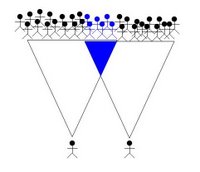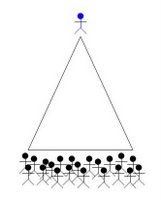Definition: Several possible origins include: 1) Derived from the Old Germanic name "hugihard", denoting one strong of heart, or very brave. 2) Derived from Germanic term "howart," meaning "high chief," "warden," or "chief warden." 3) From "hof-ward," the keeper of a hall
Surname Origin: English
Alternate Surname Spellings: HAYWARD (http://genealogy.about.com/library/surnames/
h/bl_name-HOWARD.htm)
From The Genealogy Tree: Howard and Allied Families (accessed 6/16/06):
HOWARD is an English patronymic name from the Norman given name HUARD and HEWARD, which came from the elements:
* hug = heart, mind + hard = hardy, brave.
and from an Old Norse name HAWARD, from elements
ha = high + varðr = guardian.
* HEWARD, HEWART, HUART are variations of the Norman form.
* HAWARD is a variation of the Norse.
* English/Norman patronymic versions include HEWARTSON, HEWERTSON, HUARTSON and HUERTSON.
* HAYWARD is an English occupational name that described the man who protected the enclosed forest or other land from damage by vandals, poachers, or animals. It comes from Old English:
o hay = enclosure + ward = guardian.
HEYWARD and HAWARD are variations.
o Some other variations are HAYWORD and HEYWORD...
The surname Howard has been worn by many distinguished bearers. . . It appears to derive from the Old Germanic name "Hugihard", denoting one strong of heart, or very brave. This first name has given rise to several other patronymic surnames other than Howard, including Huart, Heward, Hewart, etc., although another German term "howart", denoting "high chief", or "warden, could also have been the origin of Howard. Among the earliest written references we read of Huardus Houart in the Domesday Book in 1086, and one called Willelmus filius Huward was mentioned in the Pipe Rolls for Northumberland in 1170. In Ireland the name does duty for O'Hiomhair in county Clare, where it was formerly O'Hure.
(http://www.thegenealogytree.com/helpful-articles.htm)
From Genealogy.com (accessed 2005):
Origin Displayed: EnglishCoat of arms of the 18th Duke of Norfolk (from Wikipedia)
Spelling variations include: Howard, Howerd and others.
First found in Cumberland where they were seated from very ancient times, some say well before the Norman Conquest and the arrival of Duke William at Hastings in 1066 A.D.
Some of the first settlers of this name or some of its variants were: John Howard, who settled in Virginia in 1622; William Howard settled in Virginia in 1635; John Howard settled in Virginia in 1634; James Howard settled in Virginia in 1656.
Motto: Sola virtus invicta.
Motto Translated: Virtue alone invincible.
(http://genforum.genealogy.com/howard/)















